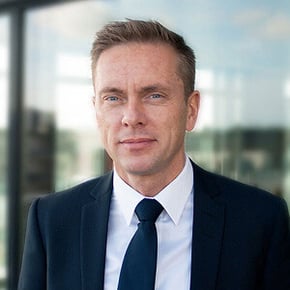In the past ten years, companies big and small have become more complex. They are required to work faster, comply with an ever-growing number of regulations and certifications, adapt to globalization, meet increasing IT security requirements, and much more. Similarly, the requirements for performance and efficiency have also increased significantly. All the while, the "market" (in all its shapes and sizes) expects companies to always keep up with these trends.
Like many other companies, at Ennova we, too, have responded to these challenges in recent years. Among other initiatives, we have reviewed and revised all our processes (quite a comprehensive exercise when you're ISO-certified…).
We have clarified the various areas of responsibility and we have reduced the number of interactions to streamline our process flows and minimize the risk of errors.
We have specified the responsibilities of our managers in more detail to fully benefit from the process optimization, and we have set new target parameters and KPIs to monitor our progress.
Sound familiar? These are classic management tools we're all trained in.
When new Initiatives Have a Negative Effect
The reaction from the staff has been positive for the most part, because it has brought renewed clarity about who does what, what we can expect from each other etc.
However, there has also been some criticism that the focus has been too internalized and that the processes are too rigid. For instance, some think that the "clarity" in the descriptions restricts freedom in both collaboration and solutions.
Unfortunately, this is something we see in a lot of companies: efforts and initiatives aimed at increasing clarity, defining responsibilities, and initiating measurable tracking end up having the opposite effect when it comes to employee performance and collaboration.
The desire for greater efficiency and simplicity results in bureaucracy. People work slower, they don't speak the same language and nobody knows who to go to to make things happen.
All too often, companies therefore find themselves with employees who are frustrated and have lost sight of the objective, meaning and direction.
Luckily, this hasn't happened at Ennova. On the contrary, the process has increased our awareness of the importance of the human dimension. To navigate the complexity and speed of our daily lives, we can't process our way out of these challenges.
We can create the framework and the guidelines, but (perhaps most importantly of all) we have to make sure that our employees have the freedom to take action and interact so they can come up with the best solutions.
This is the only way we can continue to develop, both as individuals and as a company.
Ennova has worked with this particular issue through a series of workshops, in which all employees participated. We have discussed how we each can best contribute and how we can work together to generate more value. We came up with - and are in the process of implementing - ten intentions for how we want to work together.
For example, one intention is that we should trust the quality of the deliverables we receive from other departments because we have a fundamental belief that our colleagues do their very best. This may seem simple, but it was identified as a need nonetheless.
Basing our work on the above-mentioned intention enables us to work more efficiently and with more confidence and enthusiasm. In future blog posts, I will return to our experiences with formulating intentions for our collaboration.
Processes in themselves tend to highlight our failures. What we want to do is highlight the successes of the individual and the company as a whole.
Simplify Collaboration With Leadership Support
From Low Scores to Leadership Success shows how to strengthen leadership alignment and reduce complexity through better follow-up.
Want to hear more about how too many processes and too much complexity can prevent us from doing our best? Watch this TED Talk with Yves Morieux.
Get in touch with usReady to Strengthen Your Employee Experience?
Our experts are ready to help you and your organization collect the right data and turn it into action. From survey setup to consulting, we're with you every step of the way.
|

/Good%20Intentions%20Reducing%20Complexity%20Through%20Collaboration_1200x700.jpg?width=1080&name=Good%20Intentions%20Reducing%20Complexity%20Through%20Collaboration_1200x700.jpg)